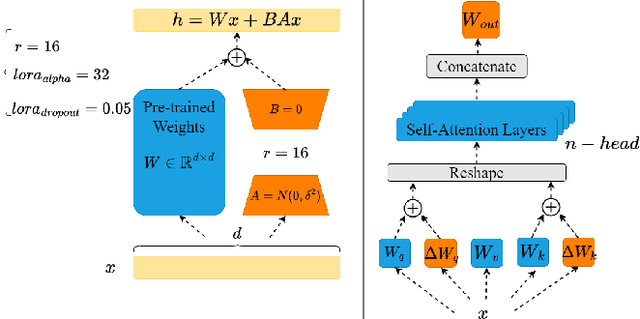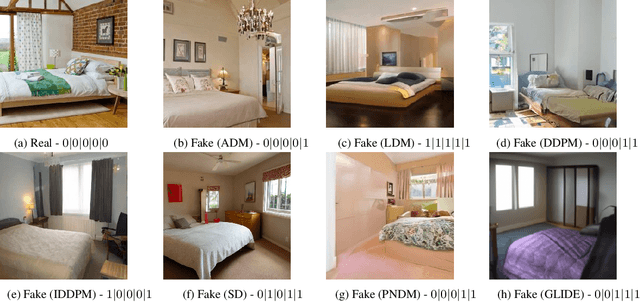Mamadou Keita
Bi-LORA: A Vision-Language Approach for Synthetic Image Detection
Apr 07, 2024



Abstract:Advancements in deep image synthesis techniques, such as generative adversarial networks (GANs) and diffusion models (DMs), have ushered in an era of generating highly realistic images. While this technological progress has captured significant interest, it has also raised concerns about the potential difficulty in distinguishing real images from their synthetic counterparts. This paper takes inspiration from the potent convergence capabilities between vision and language, coupled with the zero-shot nature of vision-language models (VLMs). We introduce an innovative method called Bi-LORA that leverages VLMs, combined with low-rank adaptation (LORA) tuning techniques, to enhance the precision of synthetic image detection for unseen model-generated images. The pivotal conceptual shift in our methodology revolves around reframing binary classification as an image captioning task, leveraging the distinctive capabilities of cutting-edge VLM, notably bootstrapping language image pre-training (BLIP2). Rigorous and comprehensive experiments are conducted to validate the effectiveness of our proposed approach, particularly in detecting unseen diffusion-generated images from unknown diffusion-based generative models during training, showcasing robustness to noise, and demonstrating generalization capabilities to GANs. The obtained results showcase an impressive average accuracy of 93.41% in synthetic image detection on unseen generation models. The code and models associated with this research can be publicly accessed at https://github.com/Mamadou-Keita/VLM-DETECT.
Harnessing the Power of Large Vision Language Models for Synthetic Image Detection
Apr 03, 2024



Abstract:In recent years, the emergence of models capable of generating images from text has attracted considerable interest, offering the possibility of creating realistic images from text descriptions. Yet these advances have also raised concerns about the potential misuse of these images, including the creation of misleading content such as fake news and propaganda. This study investigates the effectiveness of using advanced vision-language models (VLMs) for synthetic image identification. Specifically, the focus is on tuning state-of-the-art image captioning models for synthetic image detection. By harnessing the robust understanding capabilities of large VLMs, the aim is to distinguish authentic images from synthetic images produced by diffusion-based models. This study contributes to the advancement of synthetic image detection by exploiting the capabilities of visual language models such as BLIP-2 and ViTGPT2. By tailoring image captioning models, we address the challenges associated with the potential misuse of synthetic images in real-world applications. Results described in this paper highlight the promising role of VLMs in the field of synthetic image detection, outperforming conventional image-based detection techniques. Code and models can be found at https://github.com/Mamadou-Keita/VLM-DETECT.
 Add to Chrome
Add to Chrome Add to Firefox
Add to Firefox Add to Edge
Add to Edge